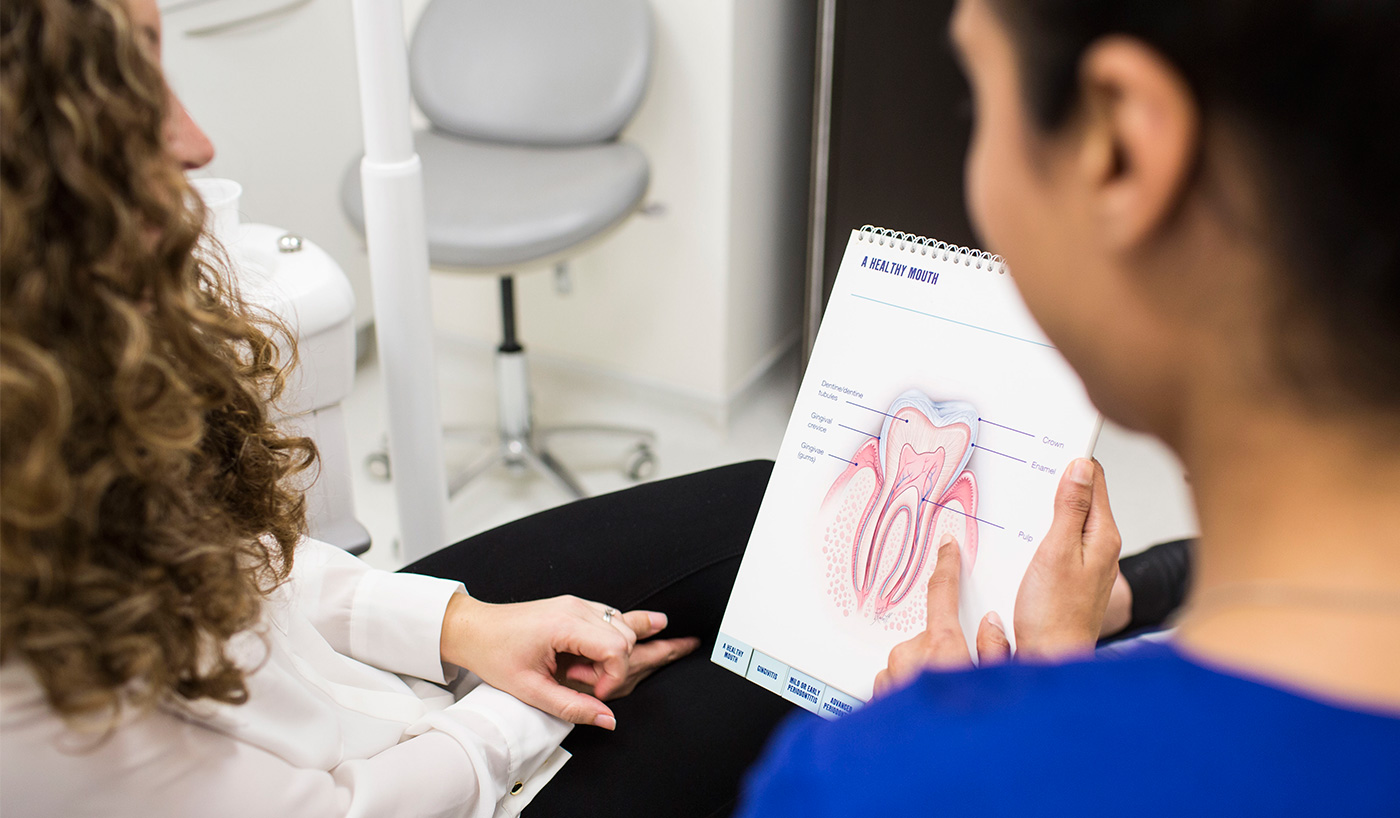Tooth wear occurs when the enamel outer surface of the tooth erodes exposing the inner dentin layer. Tooth surface wear is classified as erosion, abrasion and attrition depending on the cause.
Factors contributing to tooth wear include dental injury, tooth decay, unsafe teeth whitening, incorrect teeth brushing technique, high acid and sugar diet, and teeth grinding.
Dental Erosion
Dental erosion may be caused by excessive dental bleaching or unsafe teeth whitening without dentist supervision. Other contributing factors include consumption of excessive acidic and sugary foods such as citrus fruits and fizzy drinks.

Treating Dental Erosion
Dentists strive to treat dental erosion preventively and through dental restoration. Assessing a patient’s health holistically enables dentists to identify medical conditions that are contributing to dental erosion. Providing patient referral and having these medical conditions treated may reduce dental erosion.
Dietary advice may also help patients consume a more balanced diet by reducing acidic and sugary food intake and lowering risk of dental erosion. Dentists may recommend chewing sugar-free gum to increase saliva flow and neutralise acid content.
To restore teeth damaged by dental erosion patients are provided tooth restoration treatment options including composite fillings, dental crowns, inlays and onlays. Where dental erosion produces teeth cavities with dental pulp infection, root canal treatment may be necessary to remove infection from the root canal and prevent spread of infection.
Dental Abrasion
Tooth abrasion results from improper teeth brushing technique, when the hard toothbrush bristles excessively wear down the outer tooth surface layer. Dentists provide patients with guidance on proper teeth brushing technique to prevent dental abrasion.
Dental abrasion causes oral trauma, not just to the teeth but also gum tissue. The gums surrounding the teeth may recede exposing the inner dentin layer of teeth and tooth root surfaces. Leaving dental abrasion untreated increases tooth sensitivity and poses an increased risk of developing oral disease.

Treating Dental Abrasion
Prevention is better than cure and following recommended teeth brushing techniques helps to reduce dental abrasion. Using a soft-bristled toothbrush rather than a hard-bristled one, or using an electric toothbrush, lower the risk of dental abrasion and resulting oral trauma.
Where gums have receded dental composite may be used to fill the area if dentin is exposed. Dental composite fillings restore tooth structure, reduce tooth sensitivity and prevent tooth decay.
Bruxism is the dentistry term used to describe teeth grinding that causes tooth attrition. Tooth attrition results from teeth grinding, flattening the dental cusp surface and eventually exposing the inner dentin layer. This makes the teeth more sensitive or painful than usual.
People suffering from bruxism may grind their teeth when awake out of habit or during sleep. Untreated tooth attrition may lead to further dental trauma, improper bite and oral infection, which is why it is important to treat bruxism conditions.
Typical treatments for bruxism and to reduce the risk of tooth attrition include wearing a night or mouth guard to prevent excessive tooth contact. Having damaged teeth restored with dental restorations such as crowns, onlays, inlays and fillings can also help.
Night or mouth guards are custom-made to suit the individual’s teeth grinding condition and oral dimensions. Similarly, teeth restorations are made bespoke to restore unique dental structure and enhance teeth appearance.
If left untreated teeth grinding may cause severe dental damage and tooth attrition. This includes damage to teeth restorations such as crowns and fillings. Shielding the teeth with a night or mouth guard protects teeth from wear, improves health and reduces dental treatment costs.
Attending regular dental check-ups will enable dentists to screen patients for tooth wear. If any is identified the dentist can appropriately diagnose the cause and type of tooth wear and provide treatment recommendations.
Each type of tooth wear –dental erosion, dental abrasion or dental attrition – requires different dentistry procedures. And some individuals may suffer from one or more of these teeth wear conditions.
An individual suffering from a medical condition that causes dental erosion may need referral to a General Practitioner (GP) for treatment.
People suffering from bruxism and acid reflux disorder may not be suited to treatment with a night or mouth guard that retain excessive acid on the tooth surface. Stress and anxiety can cause bruxism and dentists may recommend patients receive medical treatment for their anxiety levels along with dental treatment.
Treating tooth wear usually involves dental restoration and prevention of future dental wear. Dentists strive to preserve existing tooth structure and oral health by providing dental restoration treatments to re-build and strengthen tooth structure, including composite fillings, inlays, onlays and dental crowns.
Educating about the causes of dental wear and prevention enables patients to engage in lifestyle practices that enhances their well-being. This includes consuming a balanced, healthy diet and cleaning teeth with a soft-bristled toothbrush.
